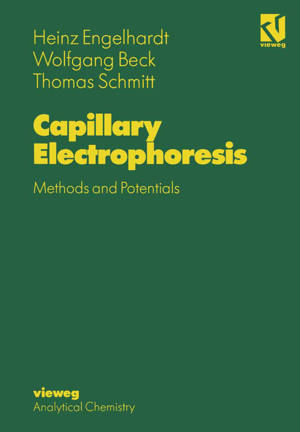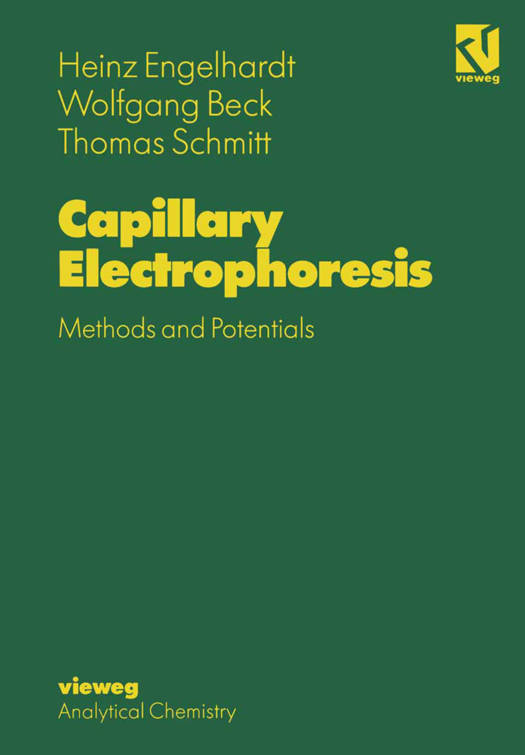
- Afhalen na 1 uur in een winkel met voorraad
- Gratis thuislevering in België vanaf € 30
- Ruim aanbod met 7 miljoen producten
- Afhalen na 1 uur in een winkel met voorraad
- Gratis thuislevering in België vanaf € 30
- Ruim aanbod met 7 miljoen producten
Zoeken
Capillary Electrophoresis
Methods and Potentials
Heinz Engelhardt, Wolfgang Beck, Thomas Schmitt
Paperback | Engels
€ 52,95
+ 105 punten
Omschrijving
Capillary electrophoresis (CE), also designated by the acronym HPCE for "High Per- formance Capillary Electrophoresis" is a rapidly growing analytical separation method. It unites the separation technique of classical electrophoresis on plates with the instrumental methods of chromatography with respect to direct detection of the solutes separated in the capillary and their ready identification and quantification. The initial problems of inadequate reproducibility in quantitative analysis, due to the necessity of handling extremely small volumes, have largely been solved in the sec- ond generation commercial instruments. Hence, a rapid and reliable separation sys- tem is available for ionic compounds from the smallest cation (the lithium ion) up to poly anions with molecular weights ranging in the millions (such as DNA molecules). The methods of gel electrophoresis and isoelectric focusing can be readily extended to separation techniques carried out in a capillary. For nonionic compounds an addi- tional separation method is available in the form of micellar electrokinetic chroma- tography (MEKC). This involves a true chromatographic separation process because the distribution of the analytes between the buffer and the micelles is superimposed on the electrophoretic migration, which contributes substantially to the selectivity.
Specificaties
Betrokkenen
- Auteur(s):
- Vertaler(s):
- Uitgeverij:
Inhoud
- Aantal bladzijden:
- 215
- Taal:
- Engels
Eigenschappen
- Productcode (EAN):
- 9783642858567
- Verschijningsdatum:
- 12/06/2012
- Uitvoering:
- Paperback
- Formaat:
- Trade paperback (VS)
- Afmetingen:
- 170 mm x 244 mm
- Gewicht:
- 367 g

Alleen bij Standaard Boekhandel
+ 105 punten op je klantenkaart van Standaard Boekhandel
Beoordelingen
We publiceren alleen reviews die voldoen aan de voorwaarden voor reviews. Bekijk onze voorwaarden voor reviews.











